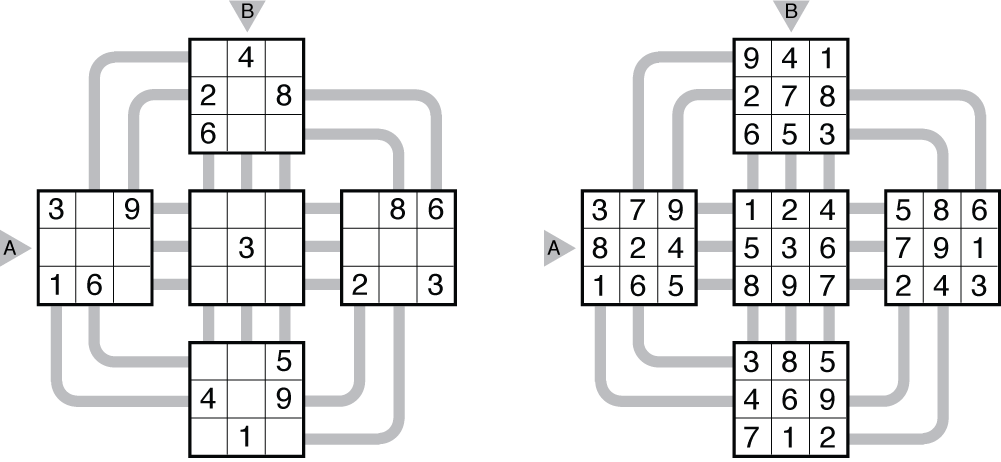Sudo-Kurve Rules & Info

Rules: Standard Sudoku rules (insert a number in the indicated range into each cell so that no number repeats in any “row” or bold region). Some “rows” bend as indicated by following the curved lines.
Answer String: Enter the “row” marked “A”, followed by a comma, followed by the row/column marked “B”. “Rows” are entered in the direction indicated by the arrow and bend as in the puzzle. This example has the key “824536791,475239861”.
(Brief) History of Sudo-Kurve: Descended from Sudoku puzzles and other geometric variations. The general concept for Sudo-Kurve was first invented by Steve Schaefer, and new grid designs have been created in this style by many authors. The name “Sudo-Kurve” is credited to Adam R. Wood.
History of this example: This Sudo-Kurve was written by Thomas Snyder as an example puzzle for Sudoku Cup 3.
Sources for Sudo-kurve: Follow this link for Sudo-kurve puzzles on this website. If you are new to this puzzle type, here are our easiest Sudo-kurve to get started on. More Sudo-Kurve puzzles can be found in Sudoku Masterpieces, and also in future titles by Grandmaster Puzzles.
Design rules for contributors: A Grandmaster Sudo-Kurve will have a unique solution that can be reached by logic alone. Generally, a Grandmaster Sudo-Kurve has a symmetric layout of numbers or a visually interesting grid shape or both. All cells in a new geometry should belong to two full “rows” as any cell with fewer neighbors is under-constrained.
